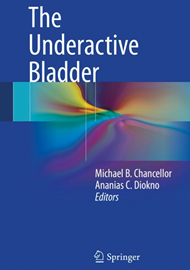For many, a diagnosis of an underactive or atonic bladder represents the end of the line in terms of management options. It remains a poorly understood and even more poorly appreciated condition, both in terms of underlying pathophysiology and alternatives to mechanical intermittent or continuous drainage. The text outlines and develops some of the nuances in establishing both a diagnosis and a cause of the underlying problem.
Chapters devoted to diabetes and a number of other neurogenic underactive bladder conditions were particularly useful as were sections on pathophysiology and animal modelling. Those clinicians with a paediatric practice will find the chapters relating to underactive bladders in children – inevitably touching on aspects relating to posterior valves, bladder exstrophy and prune-belly syndrome – particularly useful. The role of surgery is covered well and touches on reduction cystoplasty and detrusor myoplasty, as well as some of the more esoteric aspects of treatment including regenerative medicine bladder replacements.
The thorny and controversial aspects of interventions designed to decrease outlet resistance (bladder neck surgery, sphincterotomy, urethral stenting and botulinum injection) are all dealt with in a balanced fashion and have a sense of the ‘real world’ practice about them. Neuromodulation and drug treatments for underactive bladders, as well as advances in technology (including intra-urethral valve pumps), offer glimpses into improved management strategies on the horizon.





